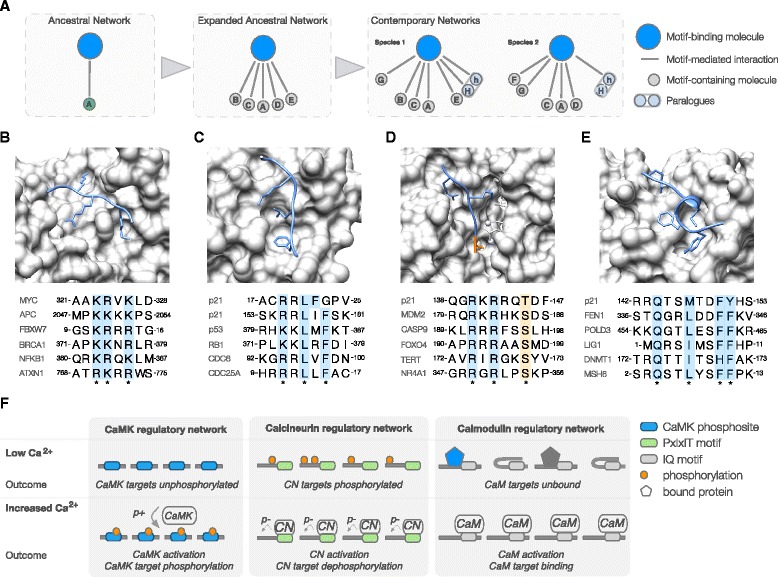Fig. 1.

Motif-dependent co-regulation of proteins. a Schema showing the expansion of a regulatory network. The original ancestral network will likely contain a limited number of targets. Proteins can be added to the network as they acquire the necessary motifs through ex nihilo evolution of novel motifs. Different species will have different regulatory networks [26, 28–30, 122, 123]. b Representative motif used to perform basal functionality. Importin-alpha bound to a nuclear localisation signal (NLS)-containing peptide from Myc [124] and representative examples of NLS motifs [125–130], showing the shared residues complementary to the binding pocket (side chains shown in structure) that result in the consensus sequence. c Representative motif involved in conditional transmission of cell state information to the motif-containing protein. Cyclin-A2 bound to a Cyclin docking motif in Cellular tumor antigen p53 [131] and representative examples of Cyclin docking motifs [131–135]. d Representative motif involved in conditional transmission of cell state information to the motif-containing protein. PKB beta bound to a PKB phosphorylation site peptide from Glycogen synthase kinase-3 beta [136] and representative examples of PKB phosphorylation sites [137–141]. The modified residue is shown in orange. e Representative motif used to recruit variable components to an invariant complex core. The PIP box-binding pocket of PCNA bound to a PIP box from p21 [142] and representative examples of PIP boxes [142–147]. f Examples of conditional motif-driven regulatory networks in which motifs underlie the co-regulation of multiple biomolecules in a coordinated manner to respond to changes in Ca2+ levels. Increased Ca2+ levels can result in motif-dependent phosphorylation (p+), dephosphorylation (p-) or competitive binding events (calcium/calmodulin-dependent protein kinase (CaMK) recognises Rxx[ST] [64], Calcineurin (CN) phosphatase recruits substrates through PxIxIT or LxVP docking motifs [65], and Calmodulin (CaM) recognises hydrophobic helical IQ motifs [66])
